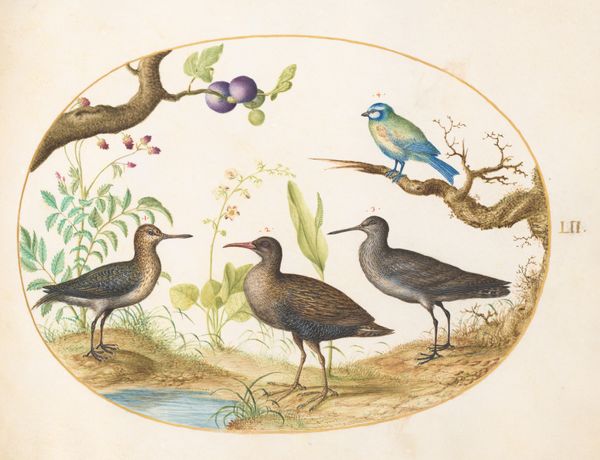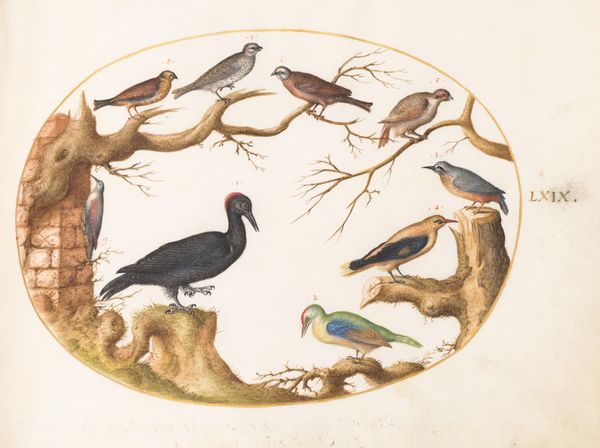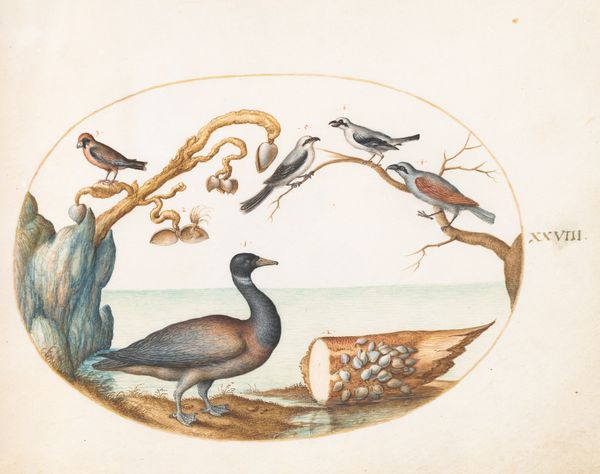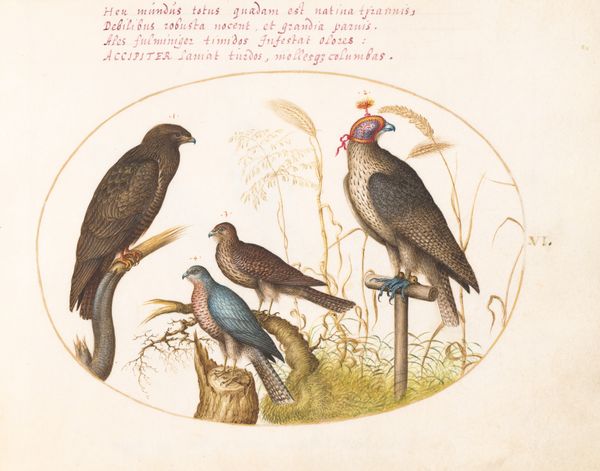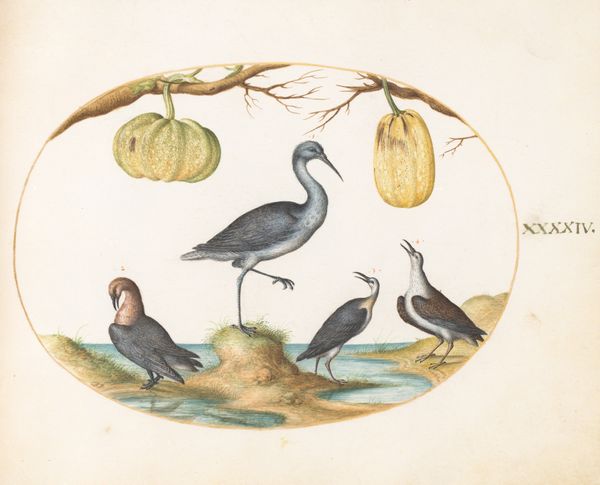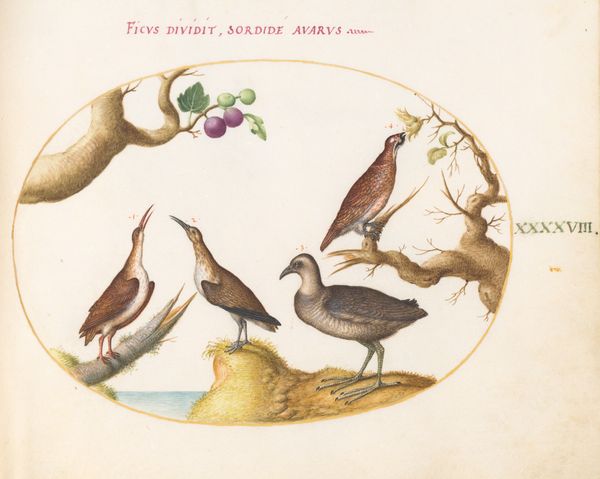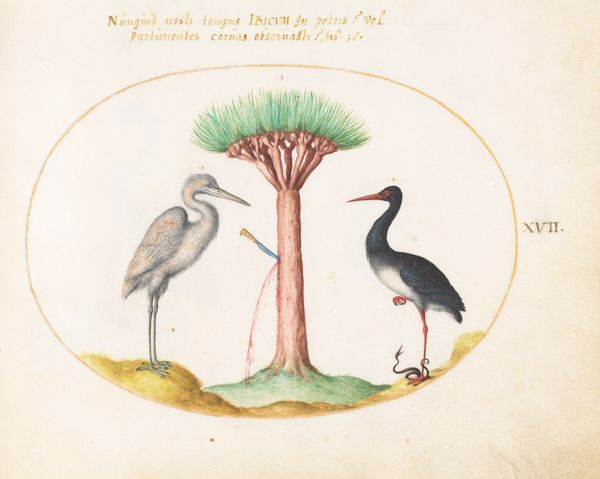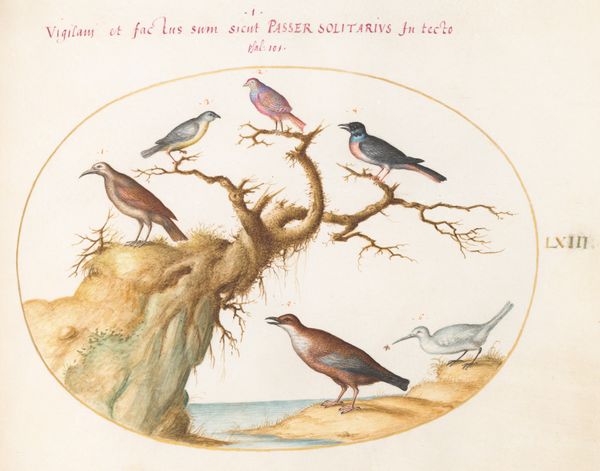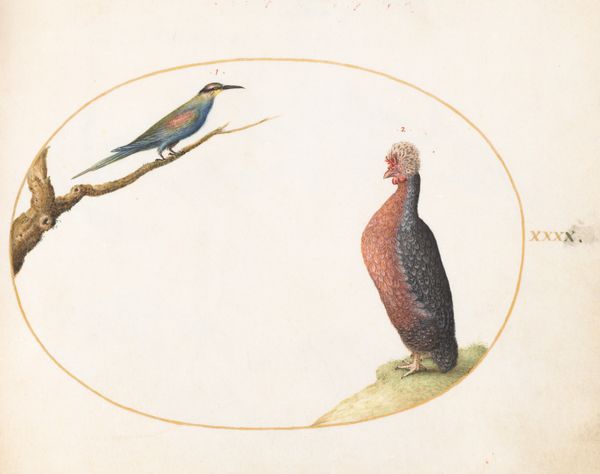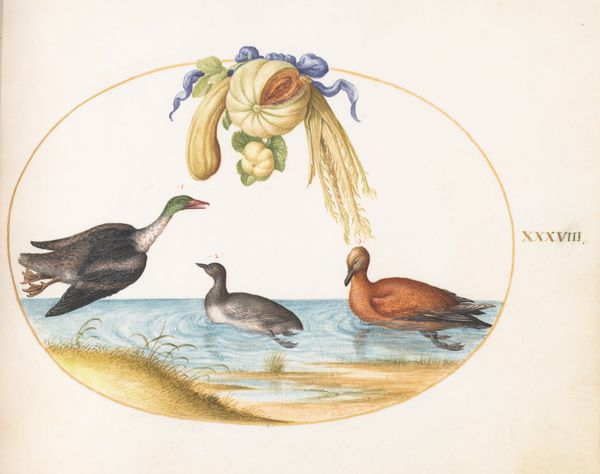
Plate 21: Swamp Hen and Woodcock with a Streaked Rosefinch, a Finch, and Oak Galls c. 1575 - 1580
0:00
0:00
drawing, fresco, watercolor
#
drawing
#
water colours
#
fresco
#
11_renaissance
#
watercolor
#
coloured pencil
Dimensions: page size (approximate): 14.3 x 18.4 cm (5 5/8 x 7 1/4 in.)
Copyright: National Gallery of Art: CC0 1.0
Editor: Here we have Joris Hoefnagel’s "Plate 21: Swamp Hen and Woodcock with a Streaked Rosefinch, a Finch, and Oak Galls", made around 1575-1580, using watercolor. I am immediately drawn to the birds; there’s almost something surreal about how vividly they are rendered against the oval backdrop. What do you see in this piece, and what does it say about its historical context? Curator: This striking illustration speaks volumes about the burgeoning scientific interest in the natural world during the late Renaissance, and how that intersects with artistic expression. These meticulously rendered birds are not merely decorative; they reflect a period increasingly interested in cataloging and understanding the natural world, particularly as Europe expanded its colonial reach. How might we understand this impulse to categorize within a context of global exploitation? Editor: That's an interesting perspective, the connection to global exploitation isn't something I had thought of initially. Curator: The precise detail given to each specimen suggests a desire to possess, not just observe. These detailed images became essential tools for understanding and, ultimately, exploiting resources in newly “discovered” lands. The very act of depicting these birds can be viewed as an assertion of power over the natural world. Can we consider how such images served the political and economic agendas of the time, contributing to narratives of European dominance? Editor: So the artwork, beyond being scientifically accurate, also participated in a system of colonial expansion by creating a visual inventory of resources, even animals? Curator: Precisely. It is vital to examine these artworks as cultural artifacts deeply embedded within their historical, political, and social contexts, unveiling how art became implicated in shaping narratives of identity, race, and power. The representation of these animals reflects and reinforces existing power structures. Editor: That gives me a lot to think about regarding art’s role in shaping cultural perceptions. Thanks for shedding some light on this, I learned something today. Curator: My pleasure, these layers of historical and cultural context are often invisible, and exploring these nuances enriches our understanding of the artwork and our history.
Comments
No comments
Be the first to comment and join the conversation on the ultimate creative platform.
